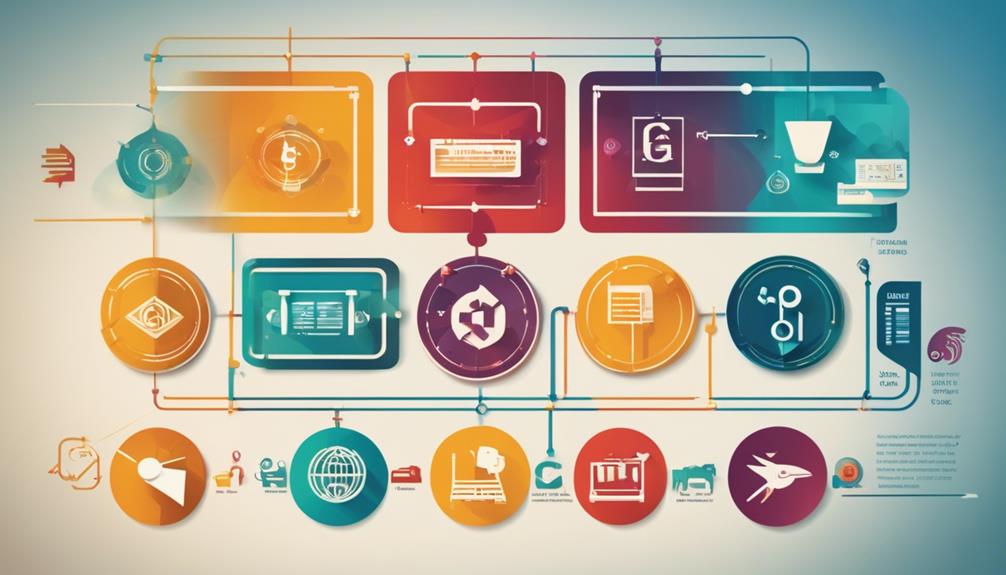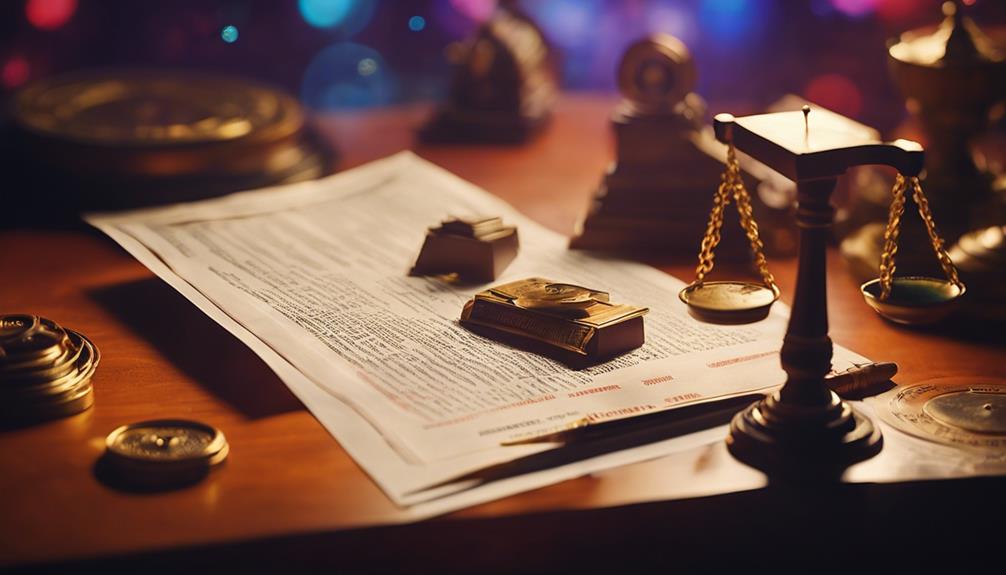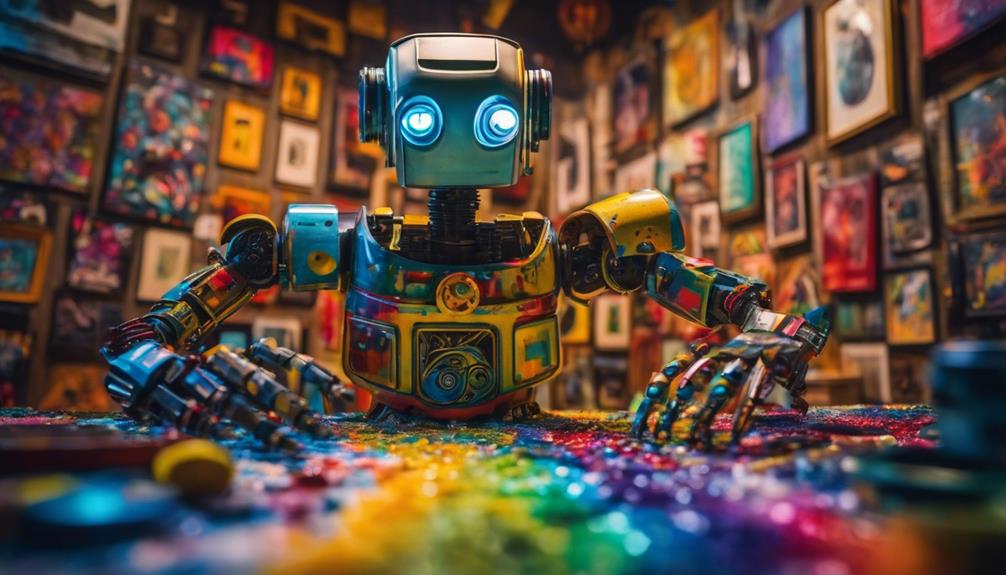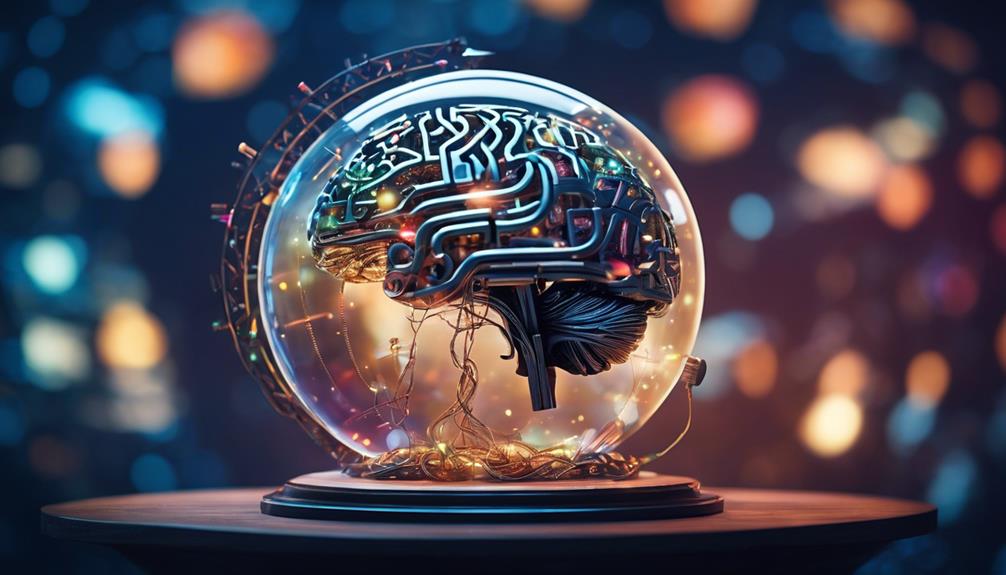Deciphering Creative Commons in AI Art
In the world of AI-generated artwork, Creative Commons licensing plays a crucial role. It allows artists to share their creations while setting rules on how others can use, change, and distribute them. This is key in a time when making art with AI is becoming more common. It helps keep the spirit of sharing and building on others’ work alive. At the same time, it brings up big questions about who owns what and the right way to use digital creations.
Understanding Creative Commons licenses is necessary to determine how old copyright laws fit with AI-made art. These licenses guide how artwork is shared and used, opening up new possibilities and challenges for those creating and enjoying art.
Key Takeaways
In the realm of AI-created art, Creative Commons licensing is pivotal. It enables creators to specify permissions for their work’s Use and distribution, which is crucial in the evolving landscape of digital artistry. This licensing framework addresses ownership concerns and the ethical utilization of digital pieces, which is vital in the burgeoning domain of AI art.
Key Takeaways:
- Creative Commons licensing empowers creators in AI art.
- It addresses ownership and ethical Use of digital creations.
- Essential for navigating copyright with AI art.
The importance of understanding these licenses cannot be understated as they shape the future of digital and AI-driven creativity, ensuring a balance between innovation and respect for creators’ rights.
Defining Creative Commons Licenses
Creative Commons licenses are like a toolkit for people who create stuff. They let creators set rules on how others can use their work. This helps with sharing and using content more freely, like AI-made art, while still giving credit and control to the original creator. It’s a way to balance letting people use and share creative work and ensuring the original creator’s rights are respected.
These licenses are super necessary today, especially with all the digital sharing and AI technology. They simplify the whole process of sharing creative work. This makes it easier for everyone to collaborate and access different content, speeding up new ideas and spreading knowledge. Creative Commons licenses play a significant role in keeping the creative world open and connected, encouraging everyone to collaborate and build on each other’s ideas.
Types of CC Licenses Explained

Understanding Creative Commons licenses is vital for anyone creating or sharing AI-generated artwork. These licenses offer a range of permissions that define how such artwork can be used, shared, and possibly modified for commercial ventures. Each license type comes with its own set of rules that creators and users must know to use the artwork correctly.
CC BY stands as the most flexible license. It simply requires you to credit the original creator when you share, change, or use their work for business purposes. This openness greatly benefits the circulation of AI artwork.
CC BY-NC takes a different approach aimed at non-commercial sharing. It allows you to distribute and alter AI artwork if you’re not making money. This license safeguards creators against unauthorized commercial Use of their work.
CC BY-ND, or ‘No Derivatives,’ is more restrictive. It allows you to share the artwork but not change it, ensuring the original piece remains unchanged. This license values the preservation of the artwork’s initial state.
The Role of CC in AI Artwork
In AI-generated art, using Creative Commons (CC) licenses is critical to protecting artists’ rights while encouraging the sharing of new ideas. These licenses help artists tell others how their work can be used, changed, or shared. It ensures that people give credit where it’s due, showing respect for the original artists’ work.
Using CC licenses is about finding a balance. It allows for the free flow of creative works without stepping on the rights of those who made them. This approach supports a healthy environment for creativity to flourish, benefiting creators and those who wish to build upon existing works. It’s an intelligent way to keep the digital art scene vibrant and innovative.
Legal Considerations and Limitations

Understanding how to use Creative Commons licenses with AI-created dog art is essential for anyone in the field. It’s all about knowing the rules around ownership, what’s fair to use, and ensuring you’re playing by the book. This knowledge ensures that AI developers can innovate without stepping on the toes of original artists.
It’s crucial for the growth of an ethical environment for creating and sharing AI dog artwork. Knowing these legalities helps everyone involved respect the balance between new creations and existing rights. This approach supports the artists and enriches the community with diverse, legally sound artwork.
Intellectual Property Concerns
Incorporating AI artwork into Creative Commons licensing involves understanding the complex landscape of intellectual property rights. It’s about ensuring AI creations respect the copyright laws that vary from place to place. This ensures that artworks can be shared legally.
Artists using AI need to think about the ethical side of sharing. They should aim to build a culture where sharing is done thoughtfully, valuing original creators’ work. It’s about balancing innovation with respect.
Then there’s the tricky part of dealing with different rules about what’s fair to use from place to place. Knowing how fair use works in various countries helps make AI content that doesn’t step on anyone’s toes. This careful approach allows for the legal Use of AI artworks under Creative Commons without causing legal issues.
Fair Use Parameters
Exploring fair Use within AI-generated dog breed artwork calls for a close look at several legal aspects. This includes considering how the artwork uses copyrighted material regarding its purpose, content, volume, and impact on the original work’s marketplace presence.
- Transformative Use is crucial because it assesses whether the AI artwork brings something new regarding expression, meaning, or message.
- The purpose is looked at mainly for limited scenarios like critique, commentary, or research.
- Nature checks the original work’s essence to see if it’s a good candidate for fair Use.
- The amount looks at how much of the copyrighted material is being used.
- Market Effect is about whether the AI artwork impacts the original work’s financial value.
This approach encourages a balance between the rights of creators and the public’s interest, promoting freedom of expression and creativity through transformative Use. It sets a guideline for understanding fair Use in creating AI artwork focused on dog breeds.
License Compliance Obligations
In creating artwork with AI, understanding the rules of Creative Commons (CC) licenses is critical. This ensures you stay on the right side of the law and maintain ethical standards.
- Know the License Terms: Knowing the conditions tied to the Creative Commons Attribution (CC) license is critical. This may include limits on using the work for profit, making changes, or the need to share alike.
- Follow Attribution Rules: When sharing AI-created art, it’s essential to attribute it correctly according to the CC license. This helps avoid copyright issues.
- Encourage Ethical Practices: Respecting CC licenses shows a dedication to fair Use. It’s about being transparent and sharing responsibly within the creative world.
Following these steps helps prevent legal troubles and encourages the responsible Use of AI in making art.
Navigating Copyright With AI Creations

Understanding copyright issues with AI-made art means knowing about Creative Commons (CC) licenses well. This is key for those using AI to make new art online. CC licenses set clear rules. They let people share, mix, and build on art without stepping on the original artist’s rights.
Knowing the details of CC licenses helps AI artists work well online. They can clearly say how others can use and credit their work. This creates a culture where everyone knows how art can be used and shared. It’s a way to ensure AI art adds value while protecting the rights of those who create it.
Future Implications and Possibilities

Exploring how Creative Commons licensing intersects with AI artwork opens up a future where art and technology merge to boost collaboration and innovation. Creative Commons licensing with AI artwork fosters a space for sharing and creates opportunities for a broad and diverse range of artists. This movement towards open sharing and inclusivity could transform art through technology, making it more accessible and encouraging ethical practices in AI art creation.
Democratizing AI Art: Creative Commons licensing breaks down barriers, enabling artists from all walks of life to share their work and connect with wider audiences. Enhanced Collaboration and Innovation: This framework supports artists in building on each other’s work, creating a fertile ground for new ideas and artistic ventures. Ethical and Responsible AI Development: With a focus on ethical sharing, Creative Commons licensing ensures respect for creators’ rights and promotes responsible behavior in the AI art community.
These trends indicate a shift towards a more inclusive, transparent, and collaborative art world driven by the core values of sharing and respect for artistic creation.
Frequently Asked Questions
What Does It Mean if an Image Has a Creative Commons License?
- Creative Commons license allows the free Use of images.
- Must credit the creator as specified.
- Some images are for non-commercial Use only.
What Does a Creative Commons License Do?
- Creative Commons license simplifies sharing content globally.
- It outlines rules for attribution and Uses in new works.
- Promotes access to educational materials widely.
Is There Copyright on AI Art?
- Copyright law meets AI art’s ethical dilemmas.
- Artist rights clash with machine-made creativity.
- Determining originality in digital art is challenging.
Does Creative Commons License Mean Free?
- Creative Commons isn’t automatically free; licenses vary.
- Some licenses limit Use to non-commercial and require attribution.
- Others allow derivatives but demand the same license sharing.
